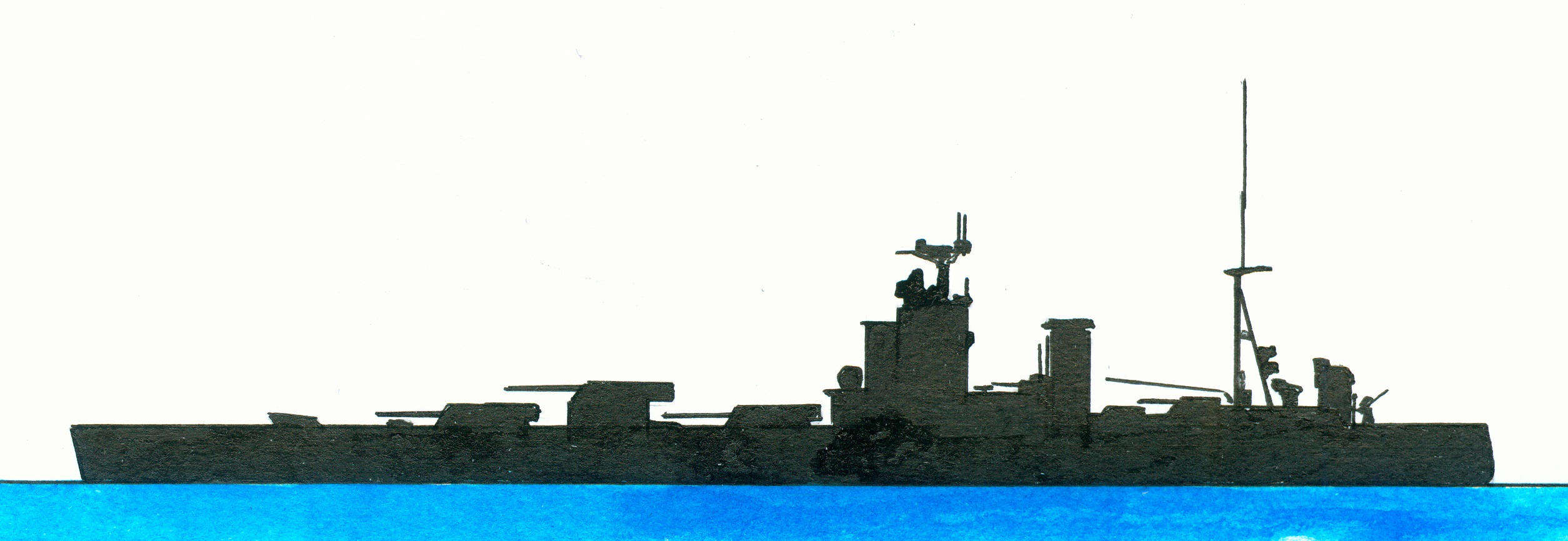British Nelson-class
Japanese Nagato
American Colorado-class
An item referred to the German magazine Marine Rundschau dated February 1927 which supplied more details dealing with the newest British battleships Rodney (1) and Nelson (2) . Their displacement was 35.000-40.000 tons with as dimensions214 x 32,5 x 9,1 metres. The armament consisted of 3x3-40,6cm L/50 guns on the fore ship, 6x2 or 8x2-15,2cm guns and 12-10,4cm anti aircraft guns. The complete aft deck was to be a aircraft landing platform. The smoke was via horizontal tubes discharged to the rear. There were several armour decks above each other and a 33cm thick deck belt protected the ship amidships, Speed 21 miles.
Notes
1.Of the Nelson-class with as sister ship the HMS Nelson, preceded by the never realized N3-class and the realized Revenge-class and succeeded by the King George V-class. She was to able to compete with the USS Colorado and the Japanese Nagato battleship classes. Building ordered in 1922, laid down at Cammell Laird, Birkenhead, England on 28 December 1922, launched on 17 December 1925, sponsored by Princess Mary, completed in August 1927, commissioned on 10 November 1927, involved in the battle with the German battleship Bismarck 26-27 May 1941. decommissioned in 1946, stricken in 1947 and started at Inverkeithing, Scotland her breaking up on 26 March 1948. Building costs 7.617.799 pond sterling. Originally intended to be larger but as result of the Washington Naval Treaty of 1922 was her designed displacement limited to just 35.000 tons. Displacement 34.270 (standard)-38.030 (full load) tons and as dimensions 216,5 (over al) x 32,3 x 9,448 metres or 710.2 x 106 x 31 feet. The 2 Brown-Curtis geared turbine sets and 8 Admiralty 3-drum oil fuelled boilers supplied 45.000 shp allowing a speed of just 23 knots and with a speed of 10 knots a range of 14.500 nautical miles. Her crew numbered 1.314-1.361 (while serving as flagship). The armour consisted of a 33-35,6cm/13-14” thick belt, a 11,1-16,2cm/4.375-6.375” thick deck, 10,2-30,5cm/4-12” thick bulkheads with the gun turrets, barbettes and conning tower protected by respectively 22,9-40,6cm/9-16”, 30,5-38,1cm/12-15” and 25,4-35,6cm/10-14”. The armament consisted of 3x3-40,6cm/16” Mk I guns all turrets situated forward of the superstructure, 6x2-15,24cm/6” Mk XXII guns, 6x2-12cm/4.7” quick firing Mk VIII anti aircraft guns and 2x1-62,2cm/24.5” torpedo tubes.
2. Pennant 28. A simplified design of the N-3 battleships which was cancelled by the British Royal navy as a result of the Washing Naval Treaty of 1922. She was to able to compete with the USS Colorado and the Japanese Nagato battleship classes. Her building was ordered in 1922, laid down on 28 December at Armstrong-Whitworth, Newcastle launched on 3 September 1925, commissioned on 15 August 1927, 1941-1942 extensively repairs needed as a result of an Italian torpedo, decommissioned in February 1948 and on 15 March a year begun her breaking up. With a displacement of 33.950 long tons/34.490 tons-41.250 long tons/41.910 (full load) were her dimensions 710’ (over all) x 106’x 33’ or 220 x 32 x 10 metres. The 8 boilers and 2 turbines delivered 45.000 shp allowing with the two screws a speed of 23,5 knots. Her range was with a reduced speed of 15 knots 7.000 nautical miles. In 1945 at the end of the Second World War consisted her armament of 3x3-16”/40,6cm guns on the fore ship, 6x2-6”/15,2cm guns, 6x1-4.7?12cm quick firing anti aircraft guns, 6x8-2pd quick firing anti aircraft guns, 4x4-4cm anti aircraft guns and 61-2cm anti aircraft guns. The amour consisted of a belt 14”/35,6cm thick amidships, a 6.75”/17,1cm thick deck, the turret fronts 16”/40,6cm and the conning tower was protected by 13.4?34cm thick armour. Her crew numbered 1.361 men.



